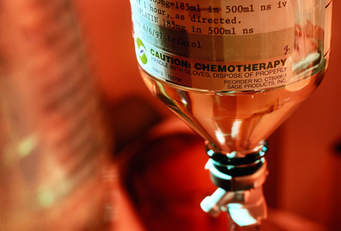How Can We Afford Cancer Treatment?
Cancer costs a lot of money. The following breakdown in the financial cost of cancer highlights the imbalance between the current focus on expensive and invasive treatment -v- prevention. Awareness and education about factors that contribute to the development of cancer coupled with lifestyle and dietary advice to help speed recovery as well as prevention appear, to me, to be a far better investment for all concerned. Qualified Naturopaths have been trained in these areas and should form part of “main stream” medicine.
 Approximately 15.5 million Americans have a history of cancer, with an estimated 1,688,780 new cases and 609,640 deaths annually.[1] With 87% of diagnoses occurring in persons ≥50 years of age, cancer remains the second leading cause of death in the United States.[1] Cancer’s financial burden is often substantial during treatment phases and often worsens with improving prognoses.[2] Cancer’s direct medical costs in the United States exceed $80 billion and indirect costs of premature morbidity and mortality exceed $130 billion.[1, 3] With 6.5% of direct costs among non-elderly persons alone involving out-of-pocket payments, over half of all persons with cancer experienced house repossession, bankruptcy, loss of independence, and relationship breakdowns.[2, 4]
Approximately 15.5 million Americans have a history of cancer, with an estimated 1,688,780 new cases and 609,640 deaths annually.[1] With 87% of diagnoses occurring in persons ≥50 years of age, cancer remains the second leading cause of death in the United States.[1] Cancer’s financial burden is often substantial during treatment phases and often worsens with improving prognoses.[2] Cancer’s direct medical costs in the United States exceed $80 billion and indirect costs of premature morbidity and mortality exceed $130 billion.[1, 3] With 6.5% of direct costs among non-elderly persons alone involving out-of-pocket payments, over half of all persons with cancer experienced house repossession, bankruptcy, loss of independence, and relationship breakdowns.[2, 4]
Additionally, 40%-85% of cancer patients stop working during initial treatment, with absences ranging up to 6 months.[5] Deductibles and copayments for treatment, supportive care, and non-medical or indirect costs (eg, travel, caregiver time, and lost productivity) may be financially devastating even with healthcare coverage.[6]
“Financial toxicity” involves the unintended financial consequences of medical treatment, including both objective and subjective attributes reflecting a patient’s financial burden.[7, 8] Clinical recommendations now suggest the assessment of economic implications of treatment algorithms and broader value assessments, whenever possible.[9]
As such, the purpose of this investigation was to assess the financial impact of cancer among the newly-diagnosed in the United States. Changes in net worth and debt (ie, consumer, mortgage, and home equity debt) were analysed according to numerous demographic, socioeconomic, and clinical factors.
This nationally-representative investigation of an initially-estimated 9.5 million newly-diagnosed persons with cancer who were ≥50 years of age found a substantial proportion incurring financial toxicity. As large financial burdens have been found to adversely affect access to care and outcomes among cancer patients, the active development of approaches to mitigate these effects among already vulnerable groups remains of key importance.
Source – Courtesy of Panaxea
Death or Debt? National Estimates of Financial Toxicity in Persons with Newly-Diagnosed Cancer. Am Journalisms Med. October 2018 Volume 131, Issue 10, Pages 1187–1199.e5. DOI: https://doi.org/10.1016/j.amjmed.2018.05.020
References
- American Cancer Society. Cancer F acts & F igures . American Cancer Society, Atlanta, GA; 2018: 2018
- The meaning of cancer: Implications for family finances and consequent impact on lifestyle, activities, roles and relationships. Psychooncology. 2012; 21: 1167–1174
- American Cancer Society. Cancer F acts & F igures 2008 S pecial S ection: Insurance and C ost- R elated B arriers to C ancer C are . American Cancer Society, Atlanta, GA; 2008
- National estimates of medical costs incurred by nonelderly cancer patients. Cancer. 2004; 100: 883–891
- Cancer survivors and unemployment: a meta-analysis and meta-regression. JAMA. 2009; 301: 753–762
- The financial burden of cancer: estimates from a study of insured women with breast cancer. J Support Oncol. 2004; 2: 271–278
- Financial toxicity, Part I: a new name for a growing problem. Oncology. 2013; 27: 80–81
- The financial burden and distress of patients with cancer: understanding and stepping-up action on the financial toxicity of cancer treatment. Ca Cancer J Clin. 2018; 68: 153–165
- Updating the American Society of Clinical Oncology value framework: revisions and reflections in response to comments received. J Clin Oncol. 2016; 34: 2925–2934

